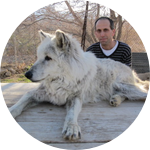About This Project
Domestic cats are predators of small songbirds throughout the world. These birds change their foraging and communicative behavior when they detect cat predators. Theory suggests that the risk of such predators varies with predator behavior, however - a sleeping cat is not the same risk as an awake cat, for example. We propose a series of experiments with robotic cat models near feeders used by Carolina chickadees and tufted titmice, to determine the specific cues these birds use to assess risk.
Ask the Scientists
Join The DiscussionWhat is the context of this research?
Our laboratory has conducted and published several studies (https://scholar.google.com/citations?user=dosMt1QAAAAJ&hl=en) of chickadee and titmouse responses to head / face orientation of hawk, owl, cat, and snake predator models. Those earlier studies relied heavily on models that were not entirely realistic looking, and that could not be manipulated systematically from a distance. The proposed research would permit the careful manipulation - in real time - of cat model movement, including eyes opened and closed, head turning, and standing or sitting or lying down.
What is the significance of this project?
The proposed research will determine the extent to which these small songbirds attend to behavior of cats, which are lethal predators imposing severe negative impacts on songbird populations. The work will increase understanding of the function and mechanisms of complex communicative and anti-predator behavior. These studies will provide foundational information for subsequent work on the kinds of cognitive and neural mechanisms underlying risk assessment and sensitivity to predator cues. The proposed research will provide fundamental information about how anti-predator behavior emerges in relation to the physical and social environment, as well as the extent of individual variation that exists in songbirds.
What are the goals of the project?
We will follow the successful methodologies of our recent published studies (https://scholar.google.com/citations?user=dosMt1QAAAAJ&hl=en). We conduct experiments at feeders the birds are used to visiting as occasional and non-predictable food sources. We present stimuli near the feeders, and record foraging rates and calling behavior. With the proposed research, we will be able to adjust predator stimulus behavior remotely. We typically use within-subjects designs, comparing each flock's response to, say, eyes closed compared to eyes opened. We assess behavior of these birds when they occur in mixed-species flocks from early fall through the following early spring each year. Our planned studies will begin September 2016 and end February 2017.
Budget
We have piloted a robotic cat with a previously-purchased Lego Mindstorm kit, and request two additional kits. The additional Arduino starter kits would provide extra flexibility for modifying robot behavior. These kits would allow us to have different robots optimized for different behavior. The different cat toys will allow variation in cat 'skins' to increase diversity in stimuli used. The video and audio recording equipment and media will provide us with an additional recording kit (we have one video + audio recording kit in use already), giving us the ability to double our person power for the study. This additional recording kit will allow us to complete individual experiments in half the time.
Endorsed by
Meet the Team
Team Bio
We have completed and published studies of chickadee and titmouse sensitivity to predator head/face orientation, using cat and hawk/owl models. These studies include Book & Freeberg 2015 Animal Cognition, Freeberg et al. 2016 Ethology, and Kyle & Freeberg 2016 (In Press) Journal of Comparative Psychology. Book and Kyle are PhD students working with Freeberg. Each of us has extensive experience with this kind of experiment and data processing needs.
Todd Freeberg
I have been fascinated by animal behavior as far back as I can remember, starting with natural history films and television programs and visits to zoos and aquaria as a child. I grew interested specifically in animal communication as an undergraduate in Ecology, Ethology, & Evolution at the University of Illinois, and have studied vocal signaling in animals ever since. Our main study species are songbirds, though we have recently begun work in some invertebrate systems. I am currently an Associate Head and Professor in the Department of Psychology at the University of Tennessee.
Steven Kyle
Steven studies prey individuals' responses to different types of predators and to different kinds of predator behavior. He has completed studies assessing songbird sensitivity to facial/head orientation of hawk, owl, and snake models, as well as sensitivity to eye gaze in hawk and owl models.
David L Book
David is interested in why people and (other) animals have cooperative or competitive interactions. He studies mechanisms that signal this cooperative or competitive intent. He is also developing models to help identify the critical factors that influence prosocial and antisocial behavior.
Additional Information
This short video shows a basic robo-cat movement we plan, and shows the robotic equipment that will be housed inside the cat models. This movement would involve the robo-cat looking away from or looking toward a feeder that is being used by chickadees and titmice.
https://goo.gl/photos/Cd6YgBt9PMwYmpRLAProject Backers
- 4Backers
- 6%Funded
- $210Total Donations
- $52.50Average Donation





